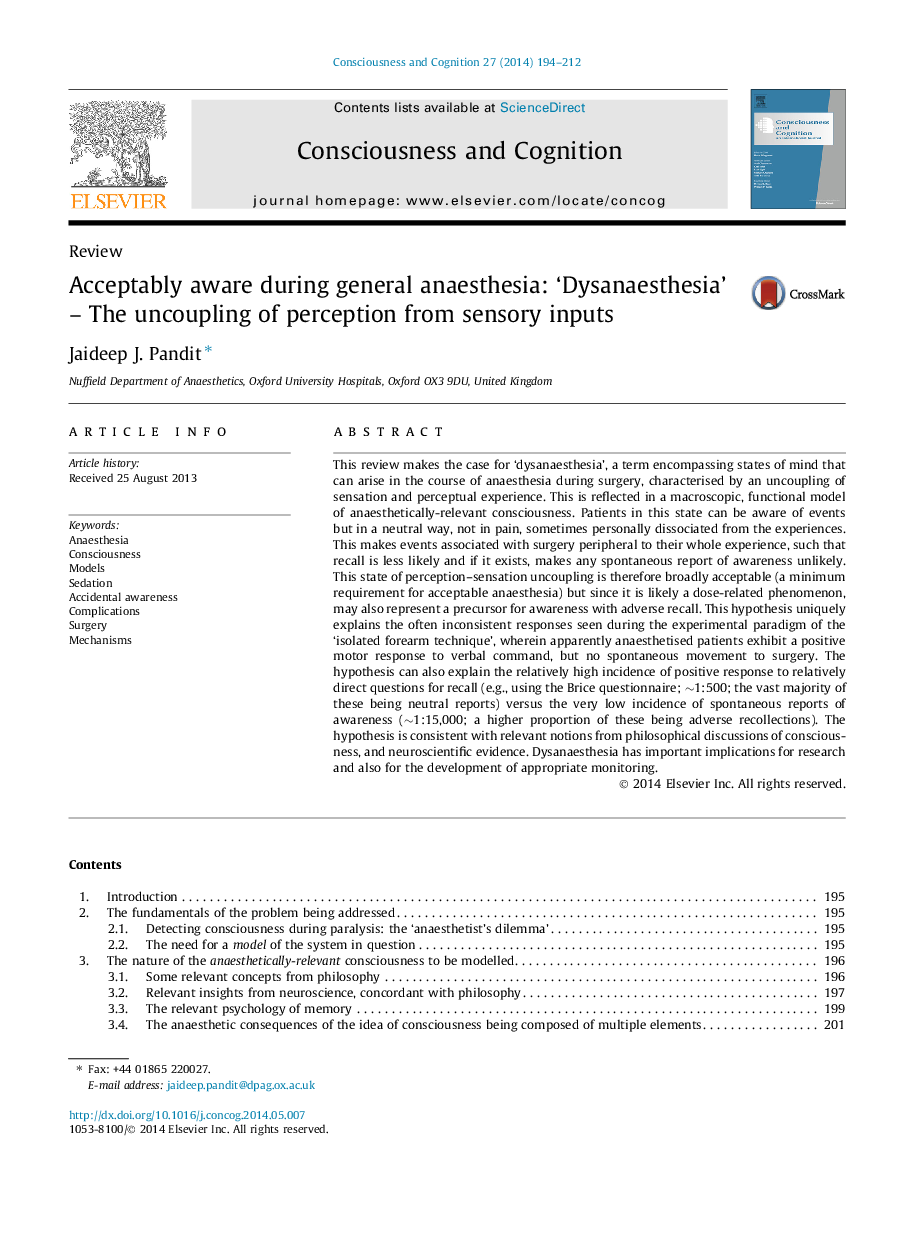| Article ID | Journal | Published Year | Pages | File Type |
|---|---|---|---|---|
| 7290072 | Consciousness and Cognition | 2014 | 19 Pages |
Abstract
This review makes the case for 'dysanaesthesia', a term encompassing states of mind that can arise in the course of anaesthesia during surgery, characterised by an uncoupling of sensation and perceptual experience. This is reflected in a macroscopic, functional model of anaesthetically-relevant consciousness. Patients in this state can be aware of events but in a neutral way, not in pain, sometimes personally dissociated from the experiences. This makes events associated with surgery peripheral to their whole experience, such that recall is less likely and if it exists, makes any spontaneous report of awareness unlikely. This state of perception-sensation uncoupling is therefore broadly acceptable (a minimum requirement for acceptable anaesthesia) but since it is likely a dose-related phenomenon, may also represent a precursor for awareness with adverse recall. This hypothesis uniquely explains the often inconsistent responses seen during the experimental paradigm of the 'isolated forearm technique', wherein apparently anaesthetised patients exhibit a positive motor response to verbal command, but no spontaneous movement to surgery. The hypothesis can also explain the relatively high incidence of positive response to relatively direct questions for recall (e.g., using the Brice questionnaire; â¼1:500; the vast majority of these being neutral reports) versus the very low incidence of spontaneous reports of awareness (â¼1:15,000; a higher proportion of these being adverse recollections). The hypothesis is consistent with relevant notions from philosophical discussions of consciousness, and neuroscientific evidence. Dysanaesthesia has important implications for research and also for the development of appropriate monitoring.
Related Topics
Life Sciences
Neuroscience
Cognitive Neuroscience
Authors
Jaideep J. Pandit,
